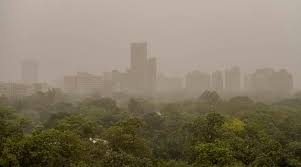 July 2022
July 2022
We want clean water, safe food and cleaner outside air. It should be equally important to have clean and healthy air in our home. There is no need for residential high-rise buildings to be poorly ventilated and lacking sufficient filtration systems to prevent the spread of COVID-19 and other infections.
Most people have no awareness of the quality of air in their home because there is no simple way to measure this. The closest measure of fresh air coming into a building in most communities, carbon dioxide detectors, is not sufficiently effective.
 Older and improperly maintained heating and cooling systems delivering a lower quality of indoor air is an ongoing concern. Very small airborne particles from viruses, including COVID, can remain in a space for minutes or hours after an infected person has left a room without proper ventilation systems in place. Some HVAC systems may not be capable of providing a sufficient volume of fresh outdoor air or not powerful enough to accommodate higher grade filters.
Older and improperly maintained heating and cooling systems delivering a lower quality of indoor air is an ongoing concern. Very small airborne particles from viruses, including COVID, can remain in a space for minutes or hours after an infected person has left a room without proper ventilation systems in place. Some HVAC systems may not be capable of providing a sufficient volume of fresh outdoor air or not powerful enough to accommodate higher grade filters.
Maintaining higher air quality standards is necessary for overall health and, in some buildings, can be expensive. This requires that our buildings be maintained to health-based standards rather than minimum standards. It can be easier, although less effective, to pretend masks or more intense surface cleaning are effective solutions.
Researchers in air quality identify three criteria for improving indoor air quality:
- Deliver more clean air into a building’s heating and cooling system so that the room brings in fresh air five or six times an hour;
- Use high-quality air filters known as HEPA or MERV-13, particularly if adequate ventilation is not possible; and
- Disinfect the air using ultraviolet lights near ceiling fans that draw the air up to them.
Portable air cleaning units are a temporary solution. They are not designed for continuous use and will likely burn out after a few years.








